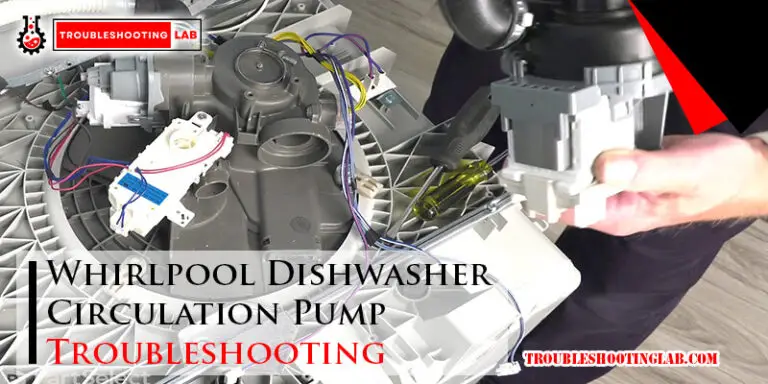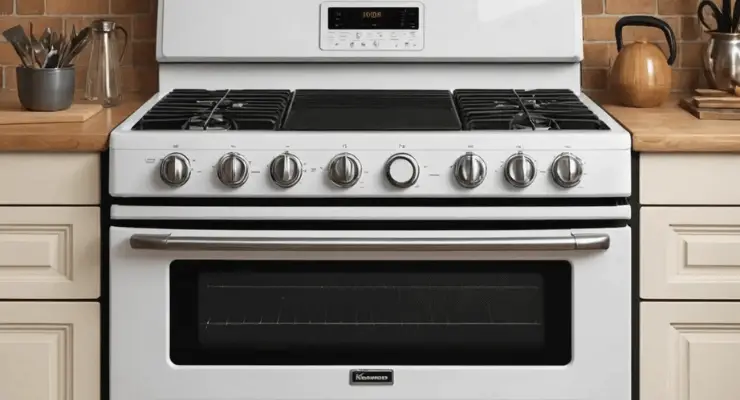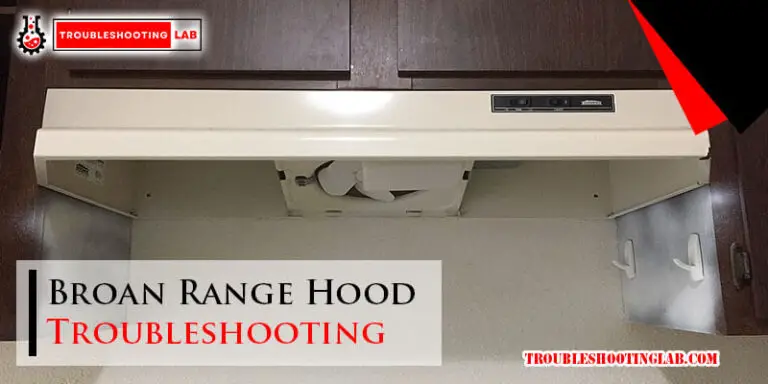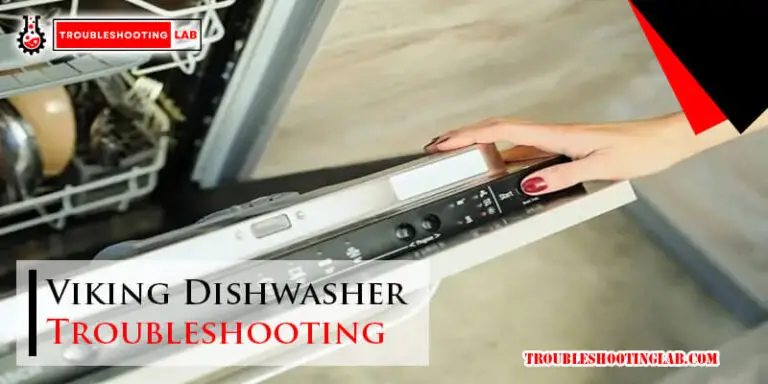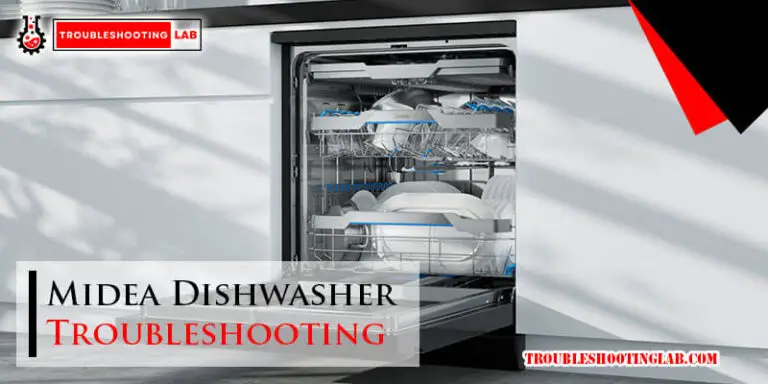Whirlpool Refrigerator Water Inlet Valve Troubleshooting Tips
Is your Whirlpool refrigerator giving you trouble with its water supply? A faulty water inlet valve could be the culprit.
This small but essential component controls the flow of water to your fridge, ensuring your ice maker and water dispenser work seamlessly. When it malfunctions, it can disrupt your daily routine and leave you frustrated. But don’t worry—troubleshooting the water inlet valve doesn’t have to be complicated.
In this guide, we’ll walk you through simple steps to identify and fix common issues. Whether you’re dealing with no water flow, leaks, or strange noises, you’ll learn how to get your fridge back to working perfectly. Stick around, because the solution might be easier than you think!

Credit: www.youtube.com
Common Signs Of A Faulty Water Inlet Valve
The water inlet valve in your Whirlpool refrigerator plays a crucial role in ensuring a steady flow of water to your ice maker and dispenser. When this small but essential component malfunctions, it can disrupt your daily routine. Knowing the common signs of a faulty water inlet valve can save you time, money, and frustration.
Leaking Water Issues
If you notice water pooling under your refrigerator, the water inlet valve could be the culprit. A damaged or improperly sealed valve may cause leaks, even when the fridge isn’t dispensing water. Check for drips near the back of the appliance where the water line connects—it’s a clear sign the valve needs attention.
Left unchecked, this issue can lead to water damage on your flooring or, worse, mold growth. Tightening the connections or replacing the valve can often resolve the problem. Always turn off the water supply before investigating further.
No Water Dispensing
Is your water dispenser refusing to cooperate? A faulty water inlet valve might be blocking the flow of water altogether. This often happens when the valve is clogged with sediment or simply worn out over time.
To confirm, listen for a humming noise when you press the water dispenser lever. If you hear the hum but no water flows, the valve is likely the issue. Cleaning or replacing it should restore the water flow.
Unusual Noises
Your refrigerator should quietly hum in the background, not screech or click. If you hear strange noises coming from the back of your unit, it could be the water inlet valve struggling to function. The valve might be vibrating or making a clicking sound due to wear or blockages.
Pay attention to when the noise occurs. If it happens as water is being dispensed or ice is being made, the valve is a strong suspect. Replacing it will prevent further strain on your refrigerator’s water system.
Have you experienced any of these issues? Spotting them early can save you from costly repairs. Don’t ignore these signs—your water inlet valve could be screaming for help!

Credit: www.amazon.com
Tools Needed For Troubleshooting
Having the right tools is essential for troubleshooting a Whirlpool refrigerator water inlet valve. The process involves inspecting, testing, and replacing components if necessary. Using proper tools ensures accuracy, safety, and efficiency. Below are the essential tools required for this task.
Basic Hand Tools
Start with a set of basic hand tools. A Phillips screwdriver and flathead screwdriver are necessary for removing screws and panels. Pliers are helpful for gripping and loosening connections. Wrenches can be used for tightening or loosening water inlet valve fittings. These tools are easy to find and simple to use.
Multimeter Usage
A multimeter is an essential tool for electrical testing. It helps check the continuity of the water inlet valve. Use it to measure resistance and confirm if the valve is functional. Set the multimeter to the appropriate setting before testing. Follow the user manual for proper operation.
Safety Gear Requirements
Safety gear is important during troubleshooting. Wear insulated gloves to protect your hands from electrical shocks. Use safety goggles to shield your eyes during testing or repairs. Ensure you unplug the refrigerator before starting the work. This reduces risks and ensures safe handling of components.
Steps To Inspect The Water Inlet Valve
The water inlet valve in your Whirlpool refrigerator plays a crucial role in ensuring a steady water supply for ice and water dispensers. If it’s not working correctly, you may notice issues like no water flow, leaks, or even strange noises. Inspecting the valve is a straightforward process that can save you from unnecessary repairs or replacements. Let’s break it down step by step so you can troubleshoot with confidence.
Locating The Valve
First, you need to find the water inlet valve. Typically, it’s located at the back of your refrigerator near the bottom. Unplug the fridge and slide it away from the wall to access the rear panel.
Once you’ve removed the rear panel, look for a small component connected to the water supply line. It’s usually blue or green and has water tubes running to it. If you’re unsure, refer to your refrigerator’s manual to confirm its exact location.
Checking For Physical Damage
Inspect the valve for any visible signs of wear or damage. Look closely for cracks, leaks, or corrosion around the valve body and connections. Even a small crack can disrupt water flow or cause a leak.
Don’t forget to check the water tubes and connectors. If they appear loose or damaged, it might not be the valve itself causing the issue. Tighten any loose connections and ensure there are no kinks in the tubes.
Testing Electrical Continuity
If everything looks fine physically, the next step is to test the valve’s electrical functionality. You’ll need a multimeter for this. Set the multimeter to the continuity setting and place its probes on the valve’s terminals.
A functioning valve should show a reading of 200 to 500 ohms, depending on the model. If there’s no reading or it’s outside this range, the valve is likely faulty and needs replacement. Remember to double-check that the fridge is unplugged while performing this test for your safety.
Taking the time to inspect your water inlet valve thoroughly can save you from unnecessary costs and downtime. Have you ever experienced a simple fix that saved you hours of frustration? Share your story in the comments below!
Cleaning And Maintenance Tips
Keeping your Whirlpool refrigerator water inlet valve clean is crucial. Proper maintenance ensures efficient water flow and extends the valve’s lifespan. Neglecting upkeep can lead to clogs, leaks, or reduced water pressure. Follow these simple cleaning and maintenance tips to keep your water inlet valve in excellent condition.
Removing Mineral Deposits
Mineral deposits can accumulate in the water inlet valve over time. This buildup restricts water flow and affects performance. Use a mixture of vinegar and warm water to dissolve deposits. Disconnect the valve from the water supply before cleaning. Soak the valve in the solution for 15–20 minutes. Gently scrub with a soft brush to remove stubborn residue. Rinse thoroughly with clean water before reattaching.
Preventing Clogs
Clogs in the water inlet valve can disrupt water flow. Regularly inspect the filter screen inside the valve for dirt or debris. Rinse the screen under running water to clear blockages. Install a water filter if your area has hard water. A filter reduces sediment and protects the valve from clogs. Always check the water line for kinks or damage to maintain steady water flow.
Regular Inspection Schedule
Inspect the water inlet valve every three to six months. Look for visible signs of wear, cracks, or leaks. Test the valve’s water flow by dispensing water from the refrigerator. If water pressure seems low, clean the valve or replace it if necessary. Regular checks help you identify issues early and prevent costly repairs.
When To Replace The Water Inlet Valve
The water inlet valve in your Whirlpool refrigerator plays a key role. It controls the flow of water to the ice maker and water dispenser. Over time, this valve may wear out or become faulty. Knowing when to replace it is crucial to maintain your refrigerator’s functionality.
Failure to address a faulty valve can lead to leaks or no water flow. Troubleshooting the issue and identifying the need for replacement can save you time and money.
Signs Replacement Is Necessary
There are clear signs that the water inlet valve needs replacing. If the ice maker stops producing ice, the valve may be blocked or broken. Low water pressure in the dispenser is another red flag. Water leaks around the refrigerator can also indicate valve failure.
A humming sound from the refrigerator may mean the valve is malfunctioning. If the valve doesn’t open or close properly, it might cause irregular water flow. Check for mineral buildup or cracks on the valve as visual signs of damage.
Choosing A Compatible Replacement Part
Ensure the replacement valve matches your Whirlpool refrigerator model. Refer to the user manual or the refrigerator’s model number for compatibility. Purchase OEM parts for guaranteed fit and performance.
A compatible valve prevents installation issues and ensures proper water flow. Avoid generic parts as they may not function correctly. Research and consult with experts if unsure about compatibility.
Diy Vs Professional Installation
Replacing the valve yourself can save costs. Ensure you have basic tools and follow safety measures. Shut off the water supply and unplug the refrigerator before starting.
If you’re unsure about the process, hire a professional technician. Professionals ensure proper installation and reduce the risk of damage. Incorrect installation may lead to leaks or other issues.
Preventing Future Issues
Dealing with a faulty water inlet valve on your Whirlpool refrigerator can be frustrating. Once you’ve fixed the issue, the next step is ensuring it doesn’t happen again. A few simple habits can go a long way in keeping your refrigerator running smoothly.
Using Filtered Water
Unfiltered water contains minerals and sediments that can clog your water inlet valve. Over time, this buildup can reduce water flow and cause the valve to fail. Switching to filtered water can help prevent these blockages and keep the valve functioning longer.
If your refrigerator has a built-in water filter, replace it regularly—check the manufacturer’s guidelines for how often. If not, consider using an external water filter for your water supply. Clean water doesn’t just protect your appliance; it also improves the quality of the water you drink.
Regular Appliance Maintenance
Small maintenance tasks can save you from big repair bills later. Inspect the water inlet valve every few months for signs of wear or damage. Look for cracks, leaks, or mineral buildup around the valve.
Clean the back of your refrigerator to prevent dust from affecting its components. Check the hoses connected to the valve for any kinks or signs of wear. A little effort now can spare you the headache of another breakdown.
Monitoring Water Pressure Levels
Low or high water pressure can strain the inlet valve and shorten its life. Your refrigerator’s water inlet valve typically works best at a water pressure level of 20–120 PSI. A pressure that’s too low might mean the valve doesn’t open properly, while excessive pressure could cause leaks.
You can use a water pressure gauge to measure the pressure in your home. If it’s outside the ideal range, consider installing a pressure regulator to stabilize it. Have you checked your water pressure recently? It might be the easiest fix you’ve been overlooking.
By following these practices, you’re not just preventing future water inlet valve issues—you’re extending the life of your refrigerator. A few small steps now can save you time, money, and stress down the road. So, what’s your plan to keep your fridge in top shape?

Credit: www.ifixit.com
Frequently Asked Questions
What Causes A Whirlpool Refrigerator Water Inlet Valve To Fail?
Clogs, sediment buildup, or electrical issues can damage the water inlet valve over time.
How Do I Test A Whirlpool Water Inlet Valve?
Use a multimeter to check the valve’s continuity. No continuity means the valve is faulty.
Can I Clean A Clogged Water Inlet Valve In My Refrigerator?
Yes, you can clean it by flushing water or using a descaling solution to remove debris.
Why Is My Whirlpool Refrigerator Not Dispensing Water?
A faulty inlet valve, blocked filter, or frozen water line may cause water dispensing issues.
How Much Does It Cost To Replace A Water Inlet Valve?
Replacement costs vary but are typically between $30-$100, excluding labor charges.
Conclusion
Troubleshooting your Whirlpool refrigerator water inlet valve can feel challenging. Simple steps, like checking for clogs or leaks, often solve the issue. Regular maintenance helps avoid future problems and keeps your refrigerator running smoothly. If problems persist, consider consulting a professional for assistance.
Staying proactive with repairs saves time and prevents bigger issues later. Always prioritize safety when handling appliance repairs. With patience and the right approach, you can fix many common valve problems yourself. A well-maintained valve ensures your refrigerator performs at its best.
Keep these tips handy for stress-free troubleshooting in the future.

